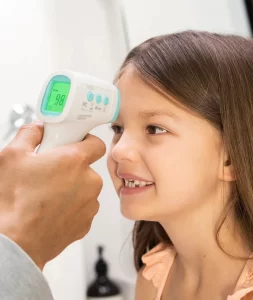What is the body running temperature?
Firstly what can lead to our body’s running temperature and is there any remedy for it?
Many factors can lead to our body’s running temperature and one basic factor is FEVER.
Although 98.6° F (37° C) is considered normal temperature, our body temperature varies throughout the day. It is lowest in the early morning and highest in the late afternoon—sometimes reaching 99.9° F (37.7° C).
Therefore let’s talk about FEVER
What is fever?
Fever is when your body temperature is higher than your normal average temp. Most providers say a fever is either 100.0 F (37.8 C) or 100.4 F (38 C). When you have a fever, it’s your body’s normal response to fighting an infection or illness. Fevers usually aren’t a serious concern because they can be managed.
SYPTOMS OF FEVER; this includes feeling cold, shivering and shaking, body aches and headaches, fatigue (tiredness), on and off, or constant sweating. Faster heartbeat and flushed complexion or hot skin.
Additional fever symptoms in babes and children include:

- Lack of appetite
- Excessive thirst
- High-pitched crying
- Decreased urination etc.
There are many causes of fever which are
- Bacterial infections
- Gastrointestinal(GI) infection
- Skin infections
- Viral infections e.g. HIV, COVID-19, HEPATITS, etc.
Other factors can include
- Vaccinations.
- A reaction due to medication and Autoimmune disorders.
CARE AND TREATMENT: You can take your temperature in several parts of your body. The most common site is your mouth (oral temperature). Other sites include the forehead (temporal artery) the ear (tympanic membrane) and the least site the armpit (axillary). The best way to measure your temperature is with the use of a digital thermometer, infrared thermometer, or Glass thermometer which contains mercury and it’s no longer recommended.

Conclusion; The use of home medical equipment can be used for proper checking or managing our temperature
